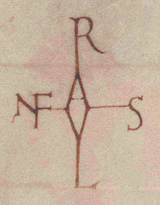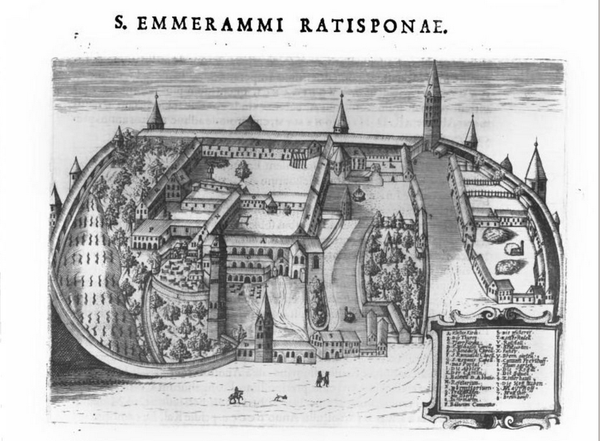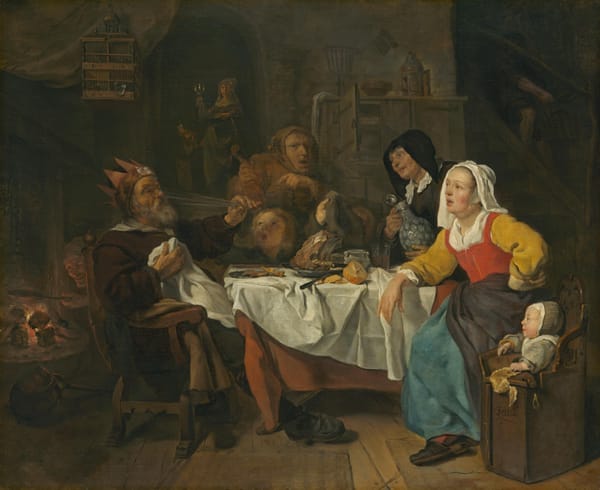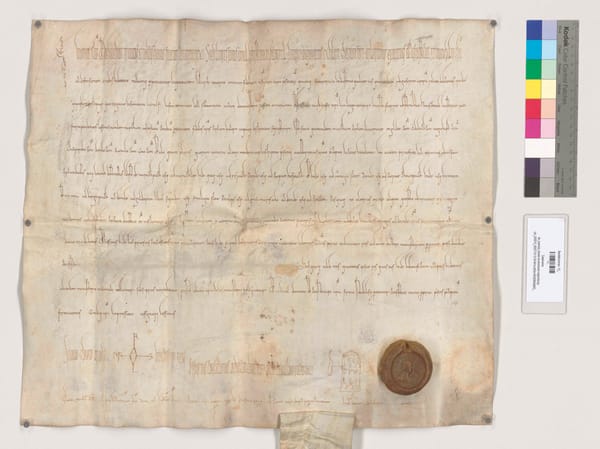Archives are Fun (and Sometimes Frustrating): The Munich Finale Post

I only have a few more days left in Munich, where I have been conducting research at the Monumenta Germaniae Historica. The MGH library is world class, and the idea of not having access to it is despair inducing. I also got to spend a good chunk of time in the Bayerische Hauptstaatsarchiv.
Working in an archive is an exercise in both joy and disappointment. On the one hand, I never did find the sort of "smoking gun" I had hoped for. I was hoping for clear evidence that some of these scribes were actually scribes at Regensburg/St. Emmeram, but while I have some hunches, there is nothing I would call definitive. Also, a few of the charters listed as being in the Hauptstaatsarchiv in Kehr's edition and repeated in the University of Marburg's Urkunden Repositorium site, are actually no longer there.[1] This was a bit frustrating to discover once I arrived, but there were still plenty to see.
I got to see 27 charters in person, something that very, very, few people get to do! At several points the archivists even made sure to double check I had the requisite permissions to view them in person (I did, have no fear). I had never worked in an archive before, so there was definitely some moments of trepidation when they hand you an 1100 year old charter! This was an incredibly rewarding opportunity, and it let me put together some new ideas about charters that would not be as obvious only seeing them in digital and print reproductions. It is possible to see the way each charter was folded, dorsal notes, and line ruling, all things that do not show up in digital copies (or are very hard to see).
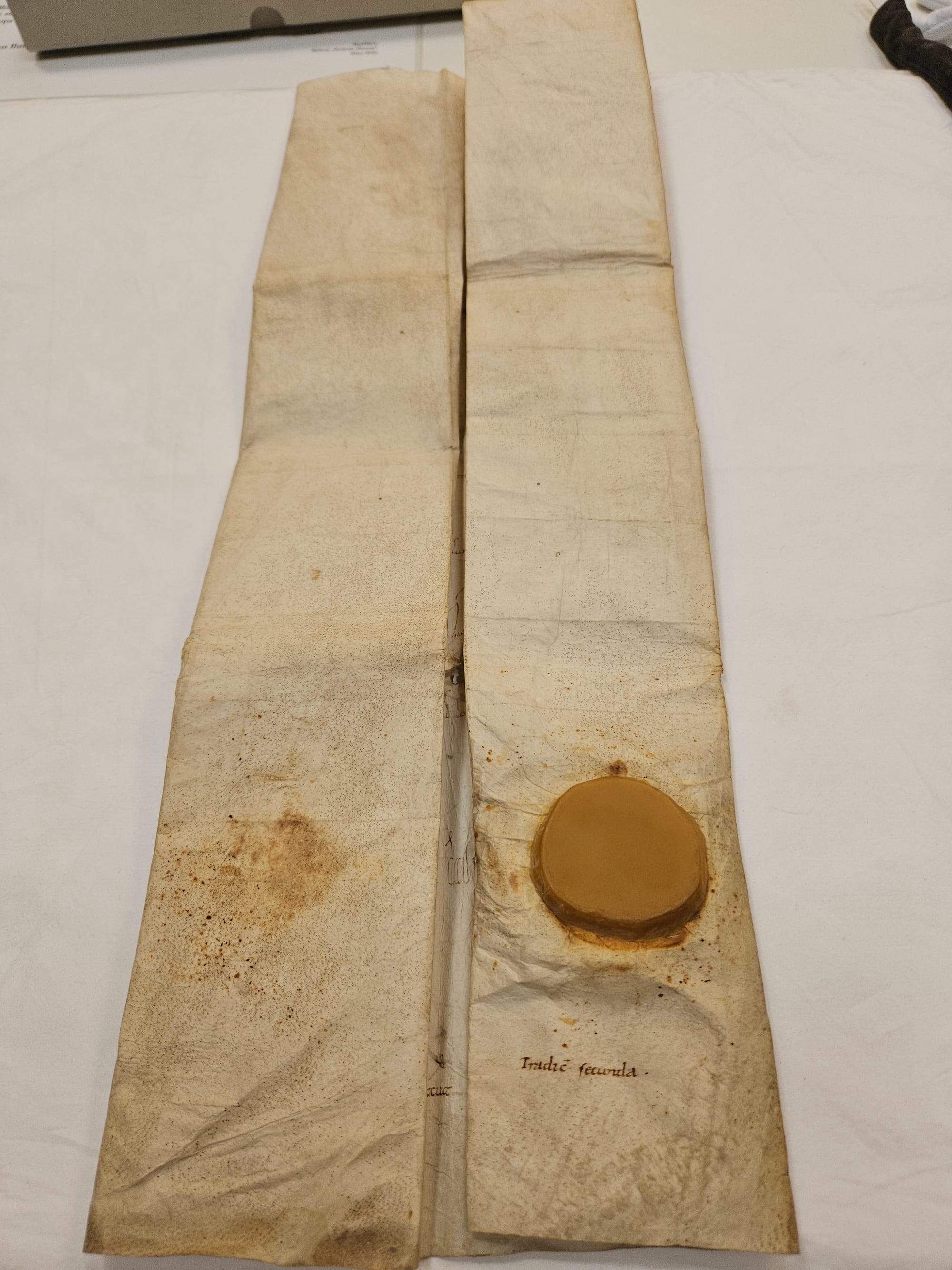
When you have it on the table, it is clear that no one is really reading these from any sort of distance. This may sound like an obvious point, but it clarified something: the physical parchment, script, etc. serve not to communicate a particularly specific point but a general one. That is, the charter communicates its status as a royal document through its physical appearance, and much of the importance must have come from the ritual and symbolic apparatus surrounding these documents.
I struggled with how best to interpret the variations between the charters, some are written in a "nicer" script, while some have mistakes, different stages of production, or downright oddities to them. As one does, I went back to the library and started reading, coming across an article I was not even looking for: Rosamond McKitterick's "Unity and Diversity in Carolingian Administrative Practice."[2] McKitterick's point was that the Carolingians either did not want to, or could not, enforce strict standardization across their kingdoms. This then reminded me of a section in Jennifer Davis' Charlemagne's Practice of Empire, which distinguishes between centralization and standardization. This distinction works well, I think, for partially understanding the changes and variations in medieval charters. While the charters worked to centralize, in that they placed the king at the center of political and social networks, they were only standardized to a certain extent insofar as it communicated the royal-ness of the document. One can ask whether the Carolingian court was all that concerned with standardization, at least complete standardization. What is clear looking at the documents is that things could and did filter down from the court, which even recipient scribes used.
For all the differences in the documents, contemporaries seemed fine requesting and keeping them, suggesting that to them it was not as big a deal as the modern historiography has sometimes made it out to be. This brings up an important point that I mentioned in the dissertation but feel more confident about now: we are uniquely positioned to investigate and catalog these changes in scribal and documentary practice. For late-ninth century audiences, on the other hand, charters were extremely limited in who was able to see or produce them. They had no modern edition of every charter, no digital reproductions, so it seems that we are not asking the right question. The question is not "what do these variations mean?" and more "would contemporaries notice variations?" Of course, for the historian we can ask what deviations from standard practice mean, but I don't think we need to tie this to say, a decline in royal authority or a "more and more barbaric" chancery as Paul Kehr put it.[3] I think about David d'Avray's book on papal charters, which were often written almost entirely by the beneficiary.[4] Instead of seeing this as evidence for a weak papacy that only could rubber stamp what recipients wanted, d'Avray turns this on its head: in a premodern system without the bureaucratic capabilities of the modern state, delegating some of the writing to recipients allowed for more document production than otherwise. As such, this was actually a clever method of managing administrative practice, not a sign of weakness.
Even from the middle of the ninth century we have evidence that recipients believed they might need to draw up their own charters. A formulary collection (think boilerplate legal documents) from Passau contains model royal charters, meaning that whoever copied this thought they would need an example to write a charter granted by a king.[5]

Obviously, then, at least at certain times and in certain places, recipients did not see it as particularly unusual to write their own charters. Otherwise, they would have no need for the formula. My theory for when and why recipients can write a charter is that it depends on the individual political context. A monastery such as St. Gall, with much closer ties to Arnulf, could be granted more leeway in producing their own documents. Or, in the case of a charter granted by Arnulf for the bishopric of Cambrai, the bishop's help in negotiating an agreement between Arnulf and Charles the Simple may mean they could have provided their own scribe to write the charter.[6]
Yet just because a recipient was involved in the production of the charter does not mean the court was simply agreeing to whatever was put in front of them. Instead there was negotiation between the parties, almost certainly in advance, and the finished document was also given some amount of courtly oversight. The language of the document thus could reflect both royal and recipient interests, within a broader documentary discourse of politics. This too must have varied based on the political context: when the bishop of Toul tried to reconcile with Arnulf it is unlikely that he had much say in the phrasing of the charter, which presented him as essentially groveling to Arnulf for forgiveness and acknowledging his wrongdoing.[7] That is, we need to be asking what the documents do instead of just what they say. The text of the document could vary, and those variations can tell us interesting things, but that isn't universally true and can only be determined by situating them within their political and social context. Where I may disagree with Koziol about charters as performatives[8], meaning that the granting of the document enacts a change in the social and political order itself, is that I am not convinced that every charter operates within a sort of grander political context. Or rather, the evidence most likely to survive are charters that deal with bigger political questions as they relate to monasteries and bishoprics, who had the archives to store and transmit them to modernity. Undoubtedly, we must have had substantially more charters for laypeople that no longer survive. Some from Arnulf's reign survive precisely because the lands eventually passed into the hands of a monastery, and they are relatively pedestrian documents compared to others.[9]
This does in some ways make for a rather unsatisfying answer, the common cry of the historian: "it depends." But it does in some ways get us out of the binary of recipient vs court interests. Charters contained both sides of the story, even if the court may have had their thumb on the scale most of the time. It is also worth mentioning that we have an example here of what seems like extreme minutia, but that is actually critical to historians' conceptions of political change and royal authority. What often appears as meaningless or esoteric can be useful when appropriately contextualized and analyzed. When anti-intellectual grifters target what they perceive as valueless, it is usually because they don't understand what the actual relevance of a source or method is. I won't belabor the point besides to caution wariness at anyone who says a type of research is pointless or too esoteric. Research is not a linear path, it isn't possible to predict what will or will not be useful in the future. Often, approaches and ideas embedded in "obscure" sources become touchstones for much broader discourses.
In any event, I will be returning to the US after a short trip with my girlfriend. I will then take a few weeks off to recharge, so do stick around until the next post! Munich was a great opportunity, and I will end this post with probably the best schnitzel I had here.

Thanks for reading Among the Ruins! If you haven’t subscribed, please do so below and you can do your part in defeating the algorithm!
- Some of the digitized versions used to be available through the Lichtbildarchiv site, which has been redone in a modern format, but many of these are now no longer available online. For instance D A 5 is listed as Kaiserselekt no. 59, but is actually Bayerische Hauptstaatsarchiv München-Jesuiten Ebersberg Urk. 1 in the modern system. ↩︎
- Rosamond McKitterick, “Unity and Diversity in Carolingian Administrative Practice,” in Die Privaturkunden Der Karolingerzeit, ed. Peter Erthart et al. ↩︎
- Paul Kehr, Die Kanzlei Ludwig des Deutschen, p. 22 ↩︎
- David D’Avray, The Power of Protocol: Diplomatics and the Dynamics of Papal Government, c. 400 - c.1600 ↩︎
- See Collectio Pataviensis, MGH Formulae, ed. Zeumer, nos. 5-6, p. 459. Phillippe Depreux, “The Development of Charters Confirming Exchange by the Royal Administration (Eighth-Tenth Centuries), in Charters and the Use of the Written Word in Medieval Society, ed. Karl Heidecker, p. 56. ↩︎
- D A 127. ↩︎
- D A 112. Note this doesn't survive in the original. ↩︎
- On performatives see the brilliantly named article by Koziol, "Making Boso the Clown: Performance and Performativity in a Pseudo-Diploma of the Renegade King (8 December 879)," in Rituals, Performatives, and Political Order in Northern Europe, c. 650-1350, ed. W. Jerzierski et al. ↩︎
- D A 152. ↩︎

